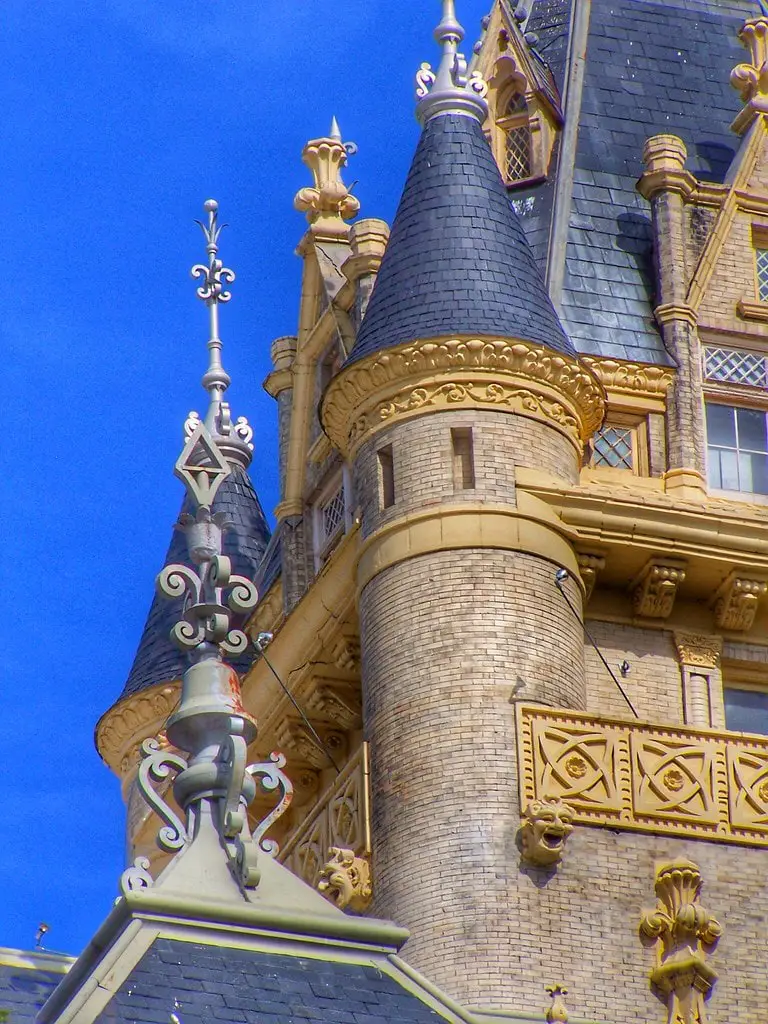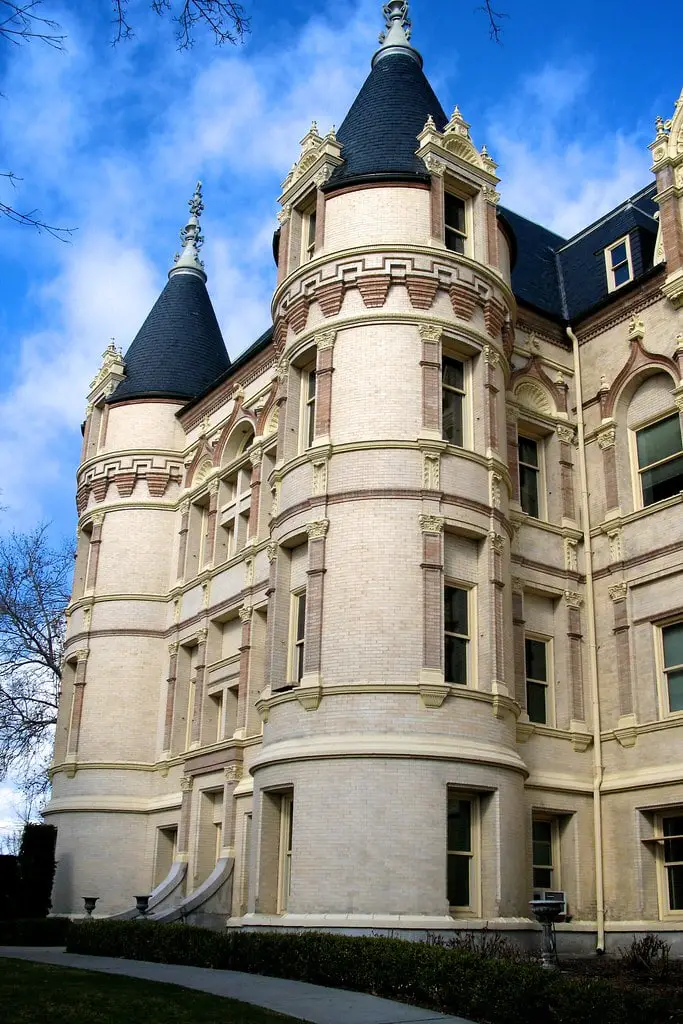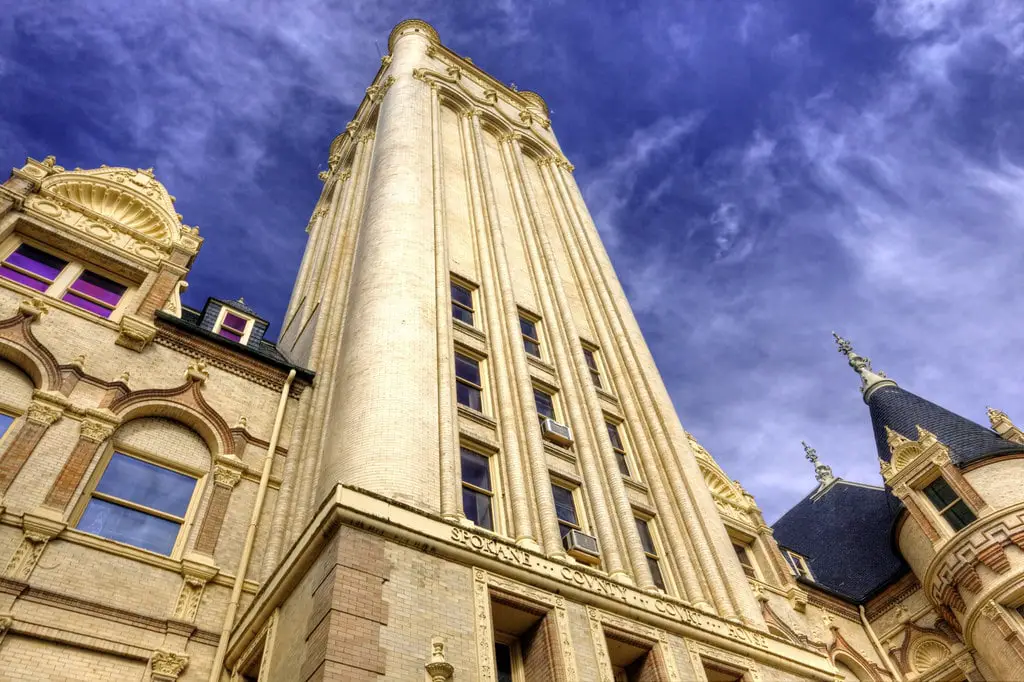The Architectural Marvel That Is the Spokane County Courthouse
Nestled in the heart of Spokane, Washington, the Spokane County Courthouse stands as a testament to the city’s architectural heritage and historical richness. This government building, a marvel of the French Renaissance Revival and Châteauesque styles, is a sight to behold.
The courthouse’s design is reminiscent of the grandeur of French architecture, drawing parallels with the illustrious Château d’Azay-le-Rideau and the Château de Chambord in the Loire Valley of France.
These chateaus, known for their intricate designs and historical significance, find a reflection in the courthouse’s architectural style, making it a symbol of Spokane’s architectural prowess.
However, the courthouse’s central tower deviates from the French Renaissance style, adding a unique touch to the overall design.
It mirrors the Romanesque Revival Allegheny County Courthouse in Pittsburgh, known for its distinctive architectural style. This blend of architectural styles gives the courthouse a unique identity, making it a landmark in Spokane.
The Journey of Construction: Triumph Amidst Controversy
The construction of the courthouse is a tale of triumph amidst controversy. The process began with a design contest won by the then-29-year-old architect Willis Ritchie. His design for a fire-proof masonry building to be constructed within a budget of $250,000 marked the beginning of the courthouse’s journey.
However, the construction process was fraught with challenges. The plan was criticized for being too extravagant, especially during an economic depression. In March 1895, construction was halted due to a disagreement between Ritchie and the construction superintendent.

Ritchie faced charges of fraud and swindling, leading to a grand jury investigation. Despite these controversies, Ritchie refused to resign, and the charges were eventually dismissed. The construction resumed, and by November 20, 1895, the building was completed, and officials moved in.
A Witness to History: Events at the Courthouse
The Spokane County Courthouse has been a silent witness to numerous historical events. In its early years, the courthouse was the site of multiple hangings, a grim reminder of the justice system of the time.
One notable case was George Webster, who was charged with first-degree murder. Despite significant public support for his compassion, Webster was hanged at the courthouse on March 30, 1900.
In a startling incident, lawyer Lou H. Plattor fell victim to a gunshot on the second floor of the building, fired by Henry Siefert, who asserted that his actions were in self-defense.

Siefert was later acquitted, adding another dramatic chapter to the courthouse’s history. These events, while grim, are part of the courthouse’s rich history, making it a symbol of Spokane’s past.
Expansion and Renovation: Adapting to the Times
To keep up with the county’s growth, the courthouse underwent an expansion in 1953. A four-story annex building replaced the public health building north of the courthouse. This expansion allowed the courthouse to continue serving the county’s needs while preserving its historical significance.
In 2006, the main building underwent a significant renovation. The project, costing approximately $2 million, involved structural work on bricks, balconies, and the roof.
The original slate roof was replaced, and restoration work was done on the decorative elements. This renovation was intended to last 100 years, ensuring the courthouse stands tall.
The Hidden Tunnel of the Spokane County Courthouse
Beneath the grandeur and architectural beauty of the Spokane County Courthouse in Washington lies a lesser-known aspect of its history – a hidden tunnel. Although not as visually striking as the courthouse’s French Renaissance revival style or its central tower, this tunnel holds intrigue and mystery.
The tunnel was primarily used to safely and discreetly transport prisoners from the nearby jail to the courthouse. This underground network provided a secure route, ensuring the safety of both the prisoners and the public.
It was a common practice in the late 19th and early 20th centuries to build such tunnels, especially in government buildings that housed law enforcement agencies and courts.

Over the years, this tunnel has been the subject of local legends and folklore. Some stories suggest that the tunnel was used for more nefarious purposes, such as smuggling during the Prohibition era. However, these tales remain unverified, adding to the mystery of the tunnel.
The tunnel is no longer in use today, but its existence provides a fascinating glimpse into the past. It serves as a reminder of the practical considerations that went into the design and construction of the courthouse beyond its architectural significance.
As residents and visitors admire the courthouse’s architectural grandeur, this hidden tunnel serves as a reminder that there’s always more than meets the eye. It adds an extra layer of history and intrigue to the already rich story of the Spokane County Courthouse.

The Courthouse Today: A Symbol of Spokane’s Heritage
Today, the Spokane County Courthouse has numerous Spokane County offices and courtrooms. It has become an integral part of the city’s governance. Its addition to the National Register of Historic Places in 1974 further cemented its status as a historic landmark.
With its nearly nine-story central tower, the courthouse continues to dominate the city’s skyline, reminding residents and visitors alike of Spokane’s rich history and architectural heritage.
Conclusion: More Than Just a Building
The Spokane County Courthouse, with its unique architecture and rich history, is more than just a government building. It is a symbol of Spokane’s past, present, and future. It is a reminder of the city’s resilience in the face of controversies and its commitment to preserving its historical landmarks.

As residents and visitors walk past the courthouse, they are not just looking at a building; they are looking at a piece of Spokane’s history that continues to shape its present.
